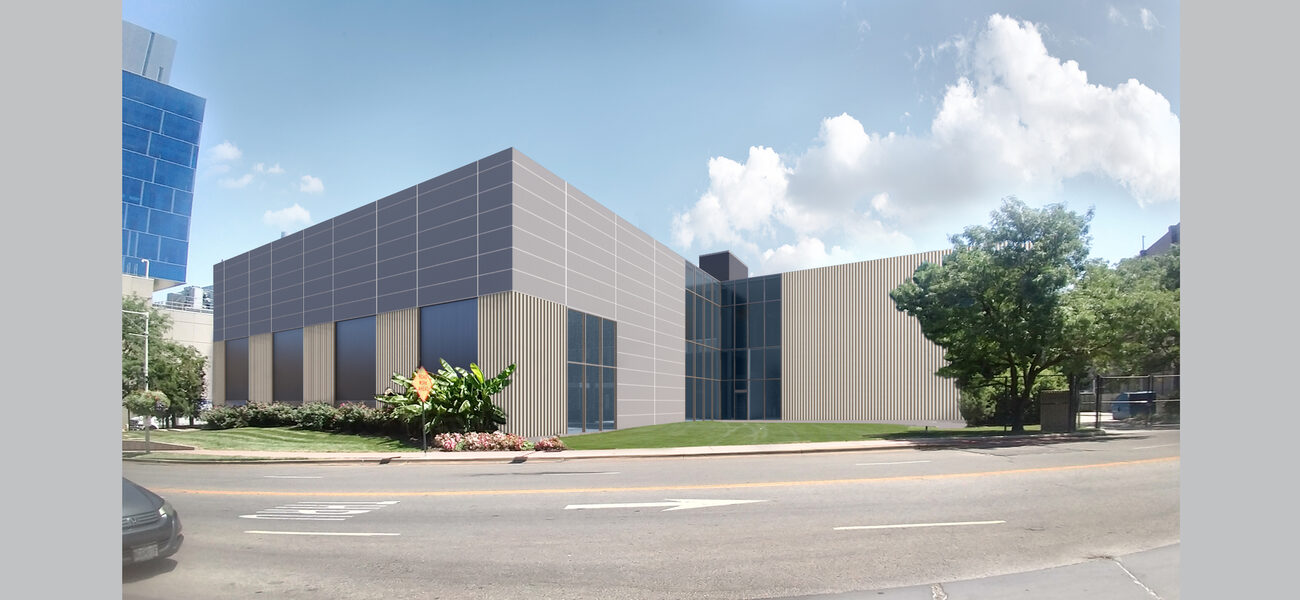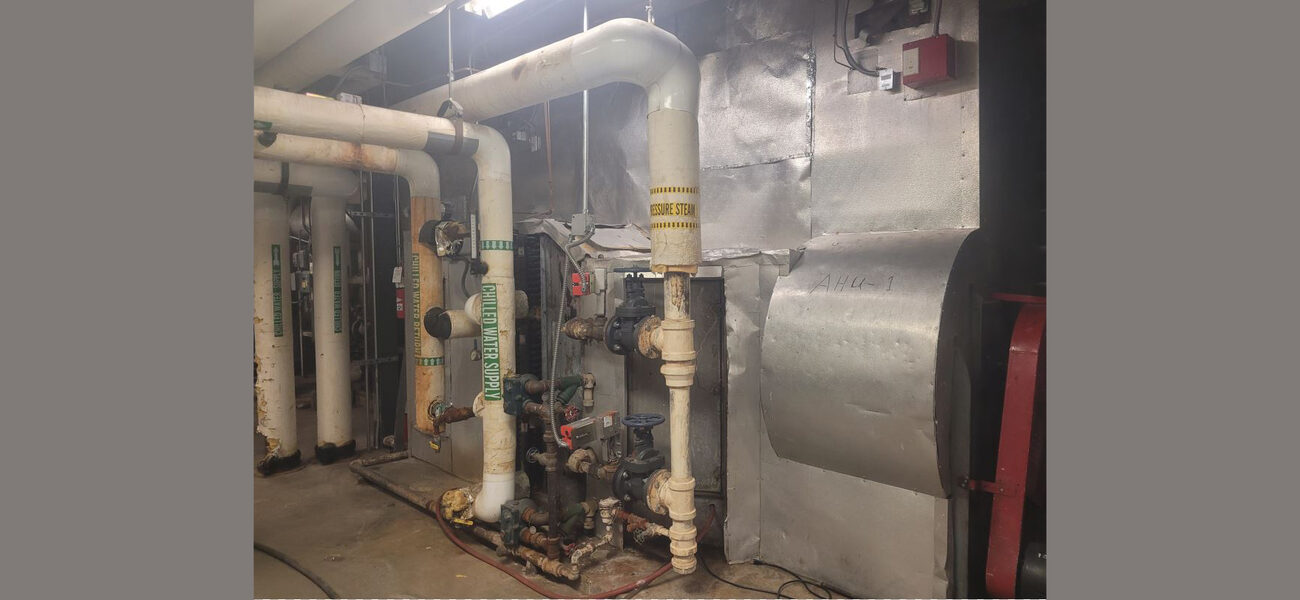The University of Kansas Medical Center faced a dilemma: how to support its growing research programs and faculty needs amid budget restrictions, aging buildings, and a backlog of deferred maintenance, all in the shadow of a decision by the university’s governing board that it would no longer fund new construction. Tasked instead with renovating existing facilities, KU Medical Center (KUMC) partnered with a facilities asset management company to assess and compile data on the condition of all infrastructure components, including everything from the air handling units, chillers, and boilers to the carpet and sprinkler system.
Using data from a variety of software, the university was able to prioritize its facilities maintenance needs and begin the process of creating an effective, long-term campus master plan that will allow KUMC to pursue its mission of conducting highly specialized research in a variety of clinical areas, including cancer, brain health, and infectious diseases.
“If we do not address deferred maintenance on our campus, our buildings will not be able to support our administrative, education, and research components that are critical to our mission and vision of our university,” says Adlai Woodworth, university architect. “Using all of these software packages together, we are able to get a realistic view of our deferred maintenance for our whole campus and get high-level costs, so we can create a future plan for addressing maintenance, space planning, and master planning.”
Accurate data regarding its maintenance and renovation needs is critical to securing funding from the Board of Regents, in addition to institutional financing and donor funds. The state legislature will provide funding increments to address the master planning through 2050, but expects KUMC to provide updated information on the condition of its facilities.
Which Facilities are Worth Saving?
Gordian, a facilities asset management and cost estimating company, employed its software platform, VFA Capital Planning, to establish a facilities condition index (FCI) to show which buildings should be given maintenance priority and which are not worth updating. The cloud-based software tracks the condition of all buildings, systems, and other assets to help establish budget priorities, and features RS Means estimating software to establish general costs for replacing end-of-lifecycle equipment. Data on each building includes its purpose; size; number of floors; replacement value of every system and component; age of various systems, such as the heating, ventilation, and air conditioning; and when the systems were inspected, how long systems are expected to last in their current condition, when they should be repaired, and how much maintenance of various systems would cost.
That information can then be leveraged to optimize the university’s budget decisions.
“The initial data given by Gordian was fairly accurate and created a great starting point,” says Woodworth. “They walked through our buildings for two to three weeks, but we’ve been working in our buildings for years, so we had to verify the data. We did field verification on some assets to update expected lifecycles of equipment and square footage.”
The FCI assigns a number to each building to signify how soon maintenance should be conducted. A brand new facility is listed with a zero, and a building not worth renovating is given a one, while the university structures desperately needing repairs fall between 0.5 and 0.6 on the index. KUMC is targeting 0.25 as an overall average.
“The medical center has 13 buildings that fall into the level of 0.5 and 0.6 on the facilities condition index,” says Woodworth. “The buildings vary in function, including office, outpatient clinic, wet/dry lab research, and higher education. The main shortcomings of these buildings are outdated mechanical, electrical equipment, and exterior envelope.”
The index shows that KUMC has more than $155 million in deferred maintenance to complete by 2030. A top priority is replacing the boiler and exterior envelope, including roof, windows and exterior walls, at the Applegate Energy Center, which serves as the campus power plant. In addition, the Applegate building needs elevator replacements, fire alarm system upgrades, and mechanical, and electrical equipment replacements.
Applegate started with an FCI of 0.55, but it is expected to achieve an index of 0.38 once the work is completed in December 2024.
“Our leadership team established a priority list for campus,” says Woodworth. “We can’t have unsafe buildings, so we need to prioritize life safety, the energy center, and the MEP systems.”
The Applegate project epitomizes how the data derived from the software platforms provides valuable information to help KUMC officials extend the life of a high-priority building.
“This energy center is our most important building on campus, as it supplies the majority of our buildings with infrastructure,” says Woodworth.
Additional plans call for the Eleanor Taylor Building, an old residence hall that was converted into office and classroom space, to be demolished by July 2023, and for approximately 75 occupants to be relocated to renovated space in the medical center. The remaining tenants in the Taylor building have already moved to other parts of the campus.
KUMC also is evaluating the possibility of demolishing up to eight more buildings by 2040. The total occupant count and relocation plans will be determined on a case-by-case basis as each project is completed.
Enhanced Space Management
Prior to using the Gordian comprehensive software to track and evaluate its buildings and infrastructure components, KUMC used spreadsheets, a work order platform, asset tracking system, and preventive maintenance software, and tried to perform space management with software designed for a different purpose. The asset-tracking software did not track all of the architectural items, such as windows, exterior walls, and foundations.
FAMIS 360, a cloud-based, maintenance management system provided by Accruent, (a Gordian company), combines all of the various software systems into one platform, a critical step to enhance efficiency and accuracy.
“This includes asset management, preventive maintenance, work orders, billing, stockroom inventory, visual maps, square footages, and departmental information, and incorporates space management, so all of this can function together in one software platform,” says Woodworth. “You can put the information in user-defined fields, and see what spaces you should use for your people, and which you should avoid if your assets are not suitable.”
FAMIS 360 integrates well with the VFA software—a deferred maintenance project can be imported into FAMIS to create a work order for that project—and syncs with the university’s AutoCAD system, which contains updated architectural prints of all buildings on campus.
Looking Ahead
To complement the comprehensive database of its facilities assets, KUMC plans to pursue either 3D modeling or laser scanning for its infrastructure. The university is still conducting a cost/benefit analysis, but could make a decision and select a company to do the work in the third quarter of 2023.
“We do intend to document existing infrastructure location and tie assets to our space management tool,” says Woodworth. “We are in the process of defining what level of detail we want on documentation for scanning.”
3D modeling would enable current and future employees to geographically locate assets quickly to minimize time spent looking for infrastructure, he says. This would also give any design team working with KUMC a starting point on drawings before completing field work, thereby reducing design fees.
The software technology and potential 3D modeling or laser scanning are indispensable as KUMC progresses with its campus master plans, which include a new Cancer Research Center, Brain Health Building, additional research facilities and potential other buildings, perhaps including a parking garage.
Woodworth advises institutions to relocate or accommodate the people working in the affected spaces when making repairs or replacing equipment, and to consider hybrid work modalities, where some individuals work from home part of the week.
Medical center leaders decided that employees participating in a pilot project on work modalities and who work from home at least three days a week will no longer have an office on campus. In response, medical center leaders created two hybrid touchdown spaces, featuring workstations, collaboration areas, meeting spaces, and lunch areas, so hybrid employees feel less isolated.
Woodworth advises hiring a fulltime employee to maintain the database, which must be kept current in order to accurately address deferred maintenance on campus, regardless of the size of the project.
“Tackling deferred maintenance can extend the useful life of your buildings,” says Woodworth. “We have seen it already and when we start updating our assets, our FCI will improve.”
By Tracy Carbasho

